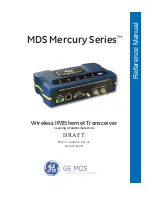
Glossary
SITRANS P DS III
Service Manual, 06/2014, A5E34219855-01
71
Safety function
Defined function executed by a safety-instrumented system with the objective of attaining or
maintaining a safe system state by taking a defined hazardous incident into account.
Example:
Limit pressure monitoring
Safety Integrity Level
→
SIL
Safety-instrumented system
A safety-instrumented system (SIS) executes the safety functions that are required to
achieve or maintain a safe state in a system. It consists of a sensor, logic unit/control system
and final controlling element.
Example:
A safety-instrumented system is made up of a pressure transmitter, a limit signal sensor and
a control valve.
Sensor
Converter that converts mechanical or other non-electric variables into electrical signals.
SIL
The international standard IEC 61508 defines four discrete safety integrity levels (SIL) from
SIL 1 to SIL 4. Each level corresponds to a probability range for the failure of a safety
function. The higher the SIL of the safety-instrumented system, the higher the probability that
the required safety function will work.
The SIL which can be achieved is determined by the following safety-instrumented
characteristics:
●
Average probability of failure on demand (PFD
AVG
)
●
Hardware fault tolerance (HFT)
●
Safe failure fraction (SFF)
srli2
→
srlin2
Summary of Contents for SITRANS P DS III
Page 1: ......
Page 2: ......
Page 13: ...Introduction 1 8 Notes on warranty SITRANS P DS III Service Manual 06 2014 A5E34219855 01 13 ...
Page 14: ......
Page 56: ...Technical specifications SITRANS P DS III 56 Service Manual 06 2014 A5E34219855 01 ...
Page 64: ......
Page 74: ......




































